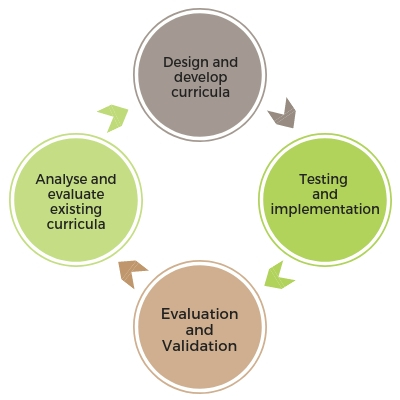Action research facilitation
![]()
Lead Partner: Norwegian University of Life Sciences
Partners provide the NextFOOD project with a number of case studies to support its scope and objectives. The cases have been selected because they are (1) at various stages in a transition to participatory, action-directed learning in agrifood systems, and (2) are directed towards a programme in the range from vocational training to university studies. To secure consistency, comparability and knowledge transferability in the case study, a common overarching participatory action research protocol is utilized to each specific case depending on its history, current situation, unique context, and future options.
The NextFOOD action research includes two distinct but interlinked processes: (1) participatory case inquiry with the aim of obtaining a desired, innovative change, and (2) research on the data generated with the aim of generating new, generic knowledge needed to contribute to more sustainable agrifood systems. WP2 will facilitate this innovation and research process in each case to ensure outputs needed in the other work packages and in agreement with the NextFOOD objectives.
![]()
The largely parallel innovation (1) and research (2) processes are structured according to the typical, but not necessarily strictly sequential, steps presented in the following graph. Studies of all cases will be directed towards the main objectives and research questions of NexFOOD and its WPs by receiving inputs from the other WPs and feeding back outputs. The methods for recording and analysing data will be determined by the research question and the nature of the material at hand.
![]()
Task 2.1. Planning of action research in the selected cases
Task 2.2. Mentoring and supervision of the action research process in the selected cases
![]()
D2.1 Research protocol
D2.2 Master manual draft 1
D2.3 Master manual draft 2
D2.4 Master manual final
D2.5 Annual case development report (year1)
D2.6 Annual case development report (year 2)
D2.7 Annual case development report (year 3)
D2.8 Annual case development report (year 4)

